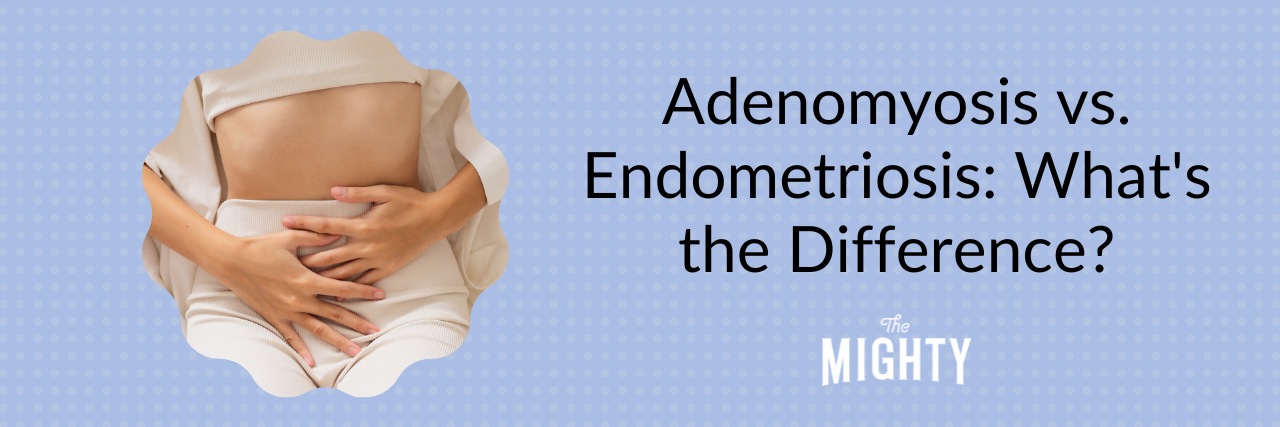Adenomyosis and endometriosis are conditions stemming from the endometrial tissue of the uterus. While they both come from the same source and manifest in similar ways, they are very different conditions. The main difference between the two diseases is that endometriosis affects organs and muscles outside of the uterus, while adenomyosis affects the inner walls of the uterus itself. However, both can certainly have a considerable impact on your overall health, especially on your ability to have children.
How common is adenomyosis or endometriosis?
Unfortunately, both conditions are fairly common and sometimes hard to detect. Adenomyosis, especially, is a bit of a problem for disease detection. While it’s estimated that between 20 and 65 percent of women and people assigned female at birth will have adenomyosis at some point in their lives, the symptoms are sometimes so mild that the condition goes unnoticed.
On the other hand, endometriosis isn’t quite as common, but it’s a more well-known condition. Around 5 to 10 percent of women and those assigned female at birth who are of childbearing age will develop endometriosis.
What are the symptoms of adenomyosis and endometriosis?
Adenomyosis symptoms
One of the main features of adenomyosis is that the uterine walls get bigger and thicker, thanks to the invading endometrial cells. You may experience these symptoms:
- Heavy and painful periods
- Chronic pelvic pain
- Infertility
- Pain during intercourse
- An enlarged uterus
Endometriosis symptoms
With endometriosis, endometrial cells travel outside the uterus and affect the surrounding tissue. The symptoms you may experience include:
- Pain during bowel movements or urination
- Pain during intercourse
- Painful periods
- Pelvic and belly pain
- Nausea
- Vomiting
- Diarrhea
- Fatigue
How they are similar
The conditions are sometimes confused because they cause pain and discomfort, primarily during your period, intercourse, or bowel movements.
How they are different
The main difference between the two is that symptoms tend to be more severe and prolonged with endometriosis. You’ll also experience nausea, vomiting, diarrhea, and fatigue more often with endometriosis than with adenomyosis.
What are the risk factors for developing adenomyosis or endometriosis?
Adenomyosis risk factors
The most distinguishing risk factors for adenomyosis are if you’re over the age of 40 and have had more than one child. It’s fairly rare that people under 40 develop adenomyosis, as they’re more likely to develop endometriosis. Additional risk factors for adenomyosis include: if you had your first period before the age of 10, if your menstrual cycles last for 24 days or fewer, or if you’ve had surgery performed on your uterus.
Endometriosis risk factors
Where adenomyosis typically affects those over the age of 40, endometriosis starts in those under 40. You’re also more likely to get endometriosis if someone in your family has had it before. Additional risk factors include heavy periods that last longer than a week, if your periods start fewer than 27 days apart, and if you had your first period before the age of 11.
How do doctors tell the difference when diagnosing?
Telling the difference between adenomyosis and endometriosis is confusing for everyday people, and even doctors struggle at times. Here is what you can expect for the diagnosis process:
Adenomyosis diagnosis
The main difference between the two conditions is the parts of the body they affect. With adenomyosis, your uterus will be enlarged, so your doctor will perform a physical to determine if it’s swollen or tender. Transvaginal ultrasounds or MRIs can also be useful in diagnosing adenomyosis.
Endometriosis diagnosis
Through a combination of your medical history, a sonogram, and an MRI, your doctor may come to suspect endometriosis. However, the only way to know for sure is with exploratory surgery or a transvaginal ultrasound.
How does treatment differ between adenomyosis and endometriosis?
Adenomyosis treatment
Minor cases of adenomyosis are treated with medication and symptom management. For more severe cases, a hysterectomy might be necessary.
Endometriosis treatment
Endometriosis doesn’t have a known cure. Treatment options to keep the symptoms and condition at bay typically include anti-inflammatory medications and hormonal treatments. Hysterectomy may improve endometriosis symptoms for some individuals.
Is the prognosis different between adenomyosis and endometriosis?
Adenomyosis prognosis
While the symptoms of adenomyosis are painful and can disrupt your life, the overall prognosis is generally good. Hormonal treatments, medications, and surgeries are available to those living with this condition. Symptoms also usually become less severe after menopause.
Endometriosis prognosis
The prognosis for endometriosis is generally good, even though there isn’t a known cure. Endometriosis, while painful and detrimental, isn’t typically a life-threatening condition. New treatments and research are being performed constantly to minimize the symptoms and reduce the risk to tissue surrounding the uterus.
If you’re struggling with either of these conditions, know that you aren’t alone. Many people around the world are experiencing the same challenges as you. Reach out to your doctor to learn more about treatment options and any support groups that may be helpful.
Stories from Mighty members about endometriosis and adenomyosis
5 Things You’ll Understand If You Have Endometriosis — This story is a brave, first-hand account of what it’s like to live with endometriosis.
5 Reasons Endometriosis Can Be Embarrassing — If you’re embarrassed by the symptoms caused by endometriosis, this story will offer some hope and encouragement.
To the Person With Endometriosis Who Just Decided to Get a Hysterectomy — This story offers support to those deciding whether to get a hysterectomy. Regardless of which way you’re leaning, this story can give you clarity and encouragement.
Connect With Others Who Have Endometriosis
The Mighty is a community for people who are living with endometriosis, adenomyosis, and other health conditions, as well as those who support them through their struggles. You can read stories from others with similar experiences, join support groups, and even share your own story.

